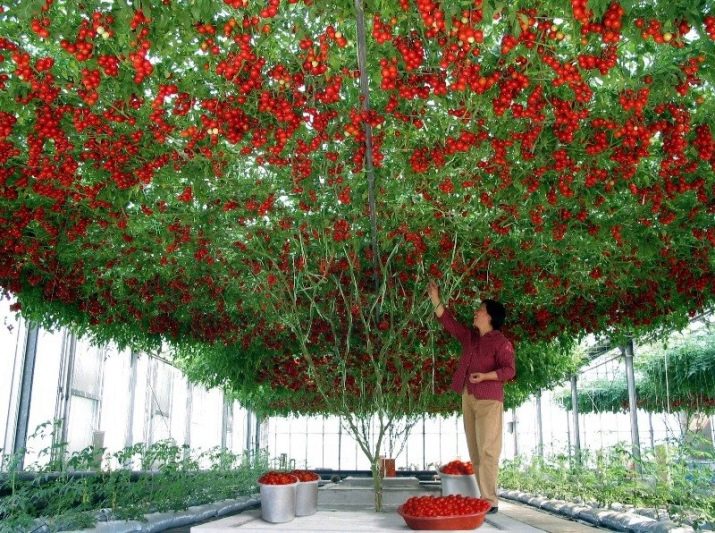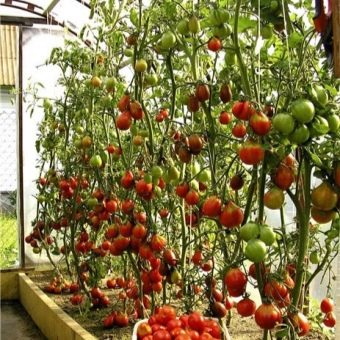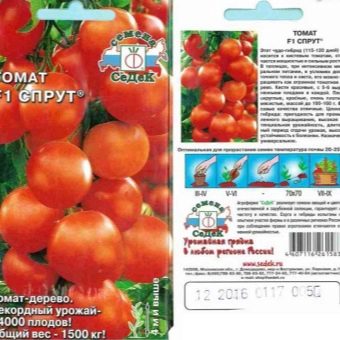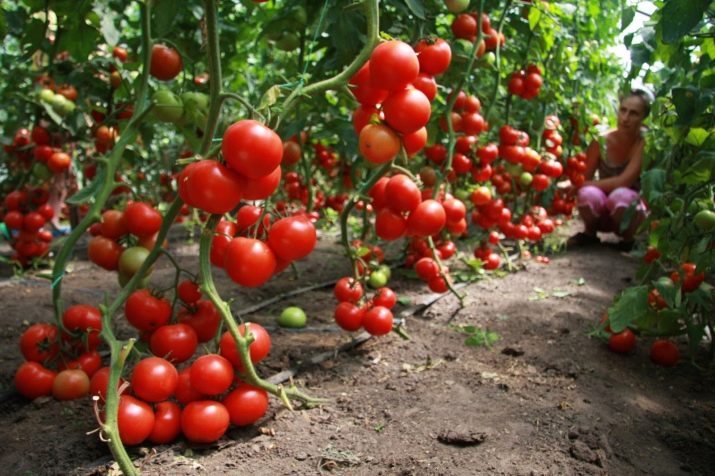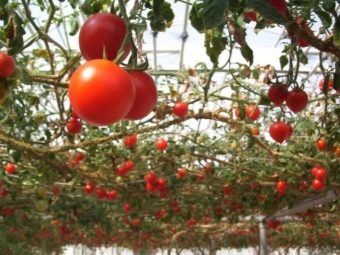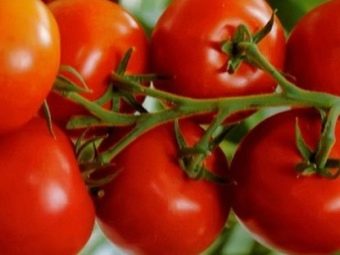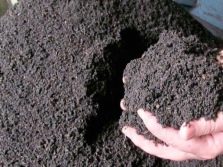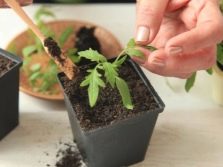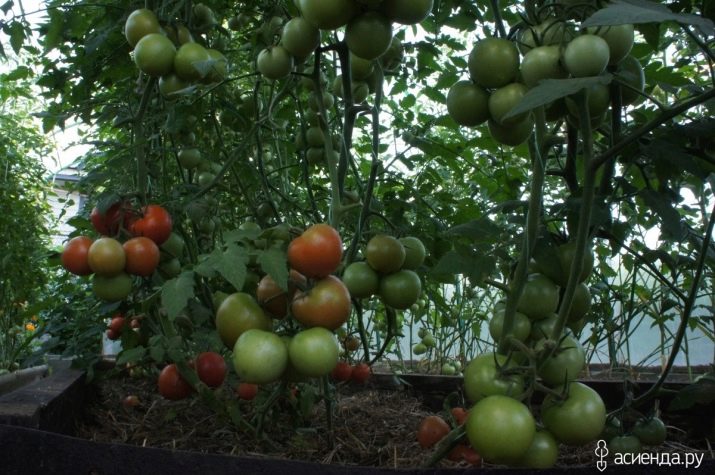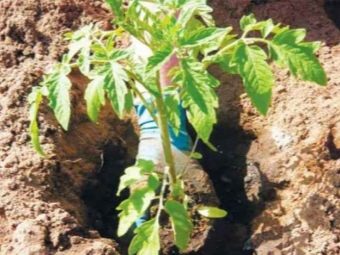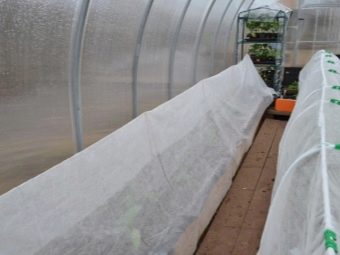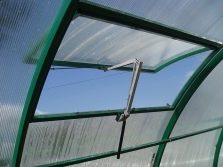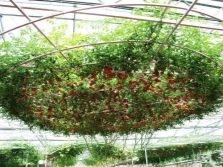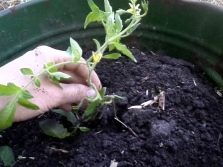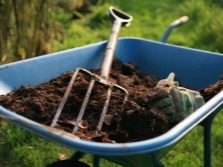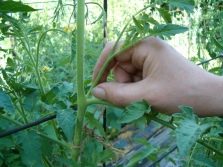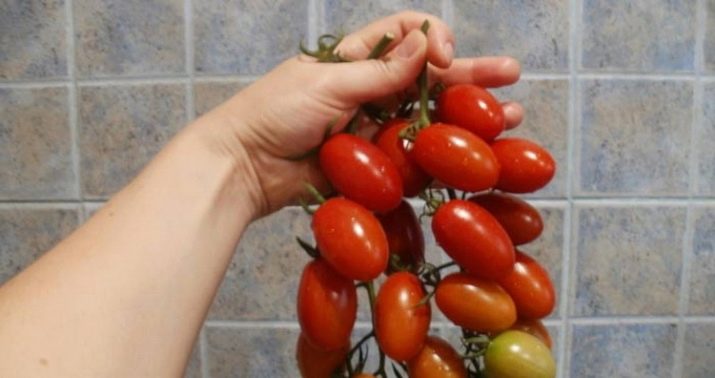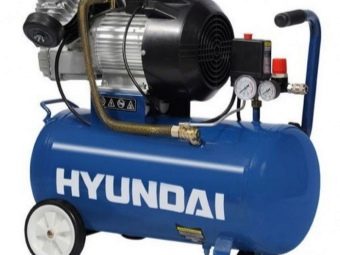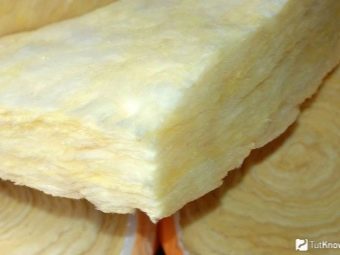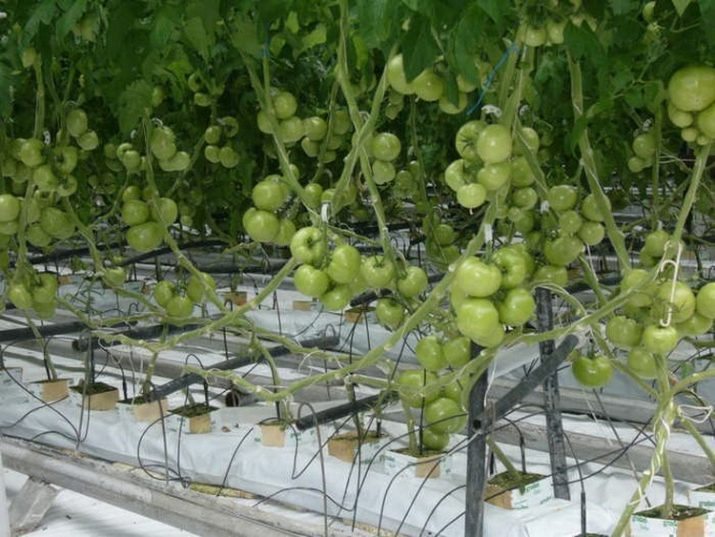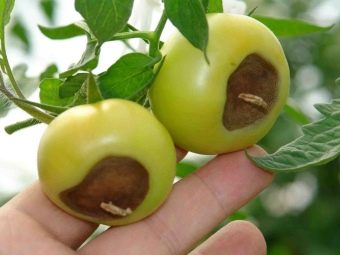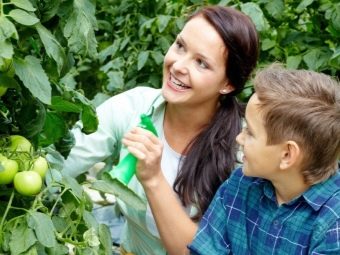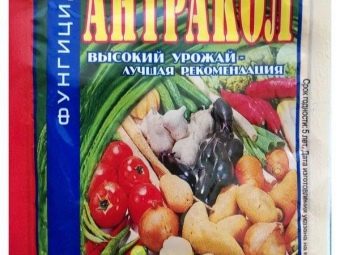Tomato "Sprut" F1: description of the variety and the cultivation process
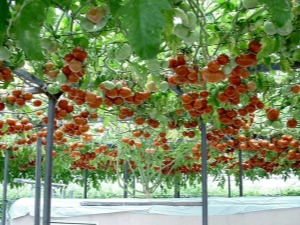
Tomatoes varieties "Octopus F1" belong to one of the most popular varieties of tomato tree. The original look, high productivity are becoming more and more interesting for both gardeners and amateur gardeners.
Characteristic
Tomatoes of this variety belong to plants with unlimited growth of shoots, the rate of growth of the stems affects all gardeners. "Octopus F1" forms a large shoot, resembling a tree with a huge mass of foliage and strong roots. This is a hybrid with stretched fruit ripening periods. During the first half of the year, the tomato is not used to harvest the fruit by growing a powerful stem. And then comes the time of fruiting, the duration of which depends on the quality of growth.
In good conditions, the shoots of tomato are scattered around the stem on an area reaching 50 square meters. m
Grow tomatoes octopus at home is not difficult, given the recommendations of experts. Reviews such tomatoes are mostly only positive.
Fruit
Tomatoes varieties "Sprut F1" have good taste. The shape of the tomatoes look like a flattened ball of bright red color with dense, juicy flesh. On average, the weight of each tomato is 150 grams. The surface of the tomatoes is flat, without tuberosities. From 4 to 7 tomatoes are gathered in each tomato brush, the brushes are located between every 3-4 leaves. Fruits are characterized by good keeping quality and long shelf life. Since the plant belongs to hybrids, collecting seeds for growing new plants is impossible.
Benefits
This tomato tree has many advantages over other varieties of tomatoes:
- huge yield per plant unit, incomparable with any variety;
- endurance in relation to elevated air temperatures, humidity;
- resistance to diseases inherent in tomatoes;
- long period of fruiting;
- wide area of use of fruits in preparations, preparation of various dishes;
- long shelf life, safe transportation.
Seedling
Seeds of variety purchased in specialized stores are sorted before sowing. To destroy the microbes, they are treated with a solution of manganese for 10-20 minutes. All seedlings should be disinfected before use. Sowing of seeds is done in January-February in dishes with the prepared soil mixture to a depth of no more than 1 cm. For quick germination of seeds, it is necessary to keep the containers in a dark warm place until the entrances appear. Within 5-6 days shoots go outside.
We rearrange the sprouted seedlings to a bright place, we maintain the air temperature within + 20-25 degrees. Increased air temperature leads to the stretching and weakening of plants. For 2 weeks we perform round-the-clock highlighting of seedlings. After forming a pair of true leaves, picks into individual pots.
Watering the seedlings is needed infrequently, every 10 days you need to feed with biohumus. All feeding is carried out in the basal way.
Where is growing better?
The tomato tree grows excellently both in open ground conditions and in greenhouses. The difference between the ways is in the yield to be obtained. When grown in a garden and compliance with technology, the harvest can be about 10 kg of tomatoes per plant. In this case we grow a bush during one season. With the greenhouse method, the sapling grows into a full-fledged large tree covered with tomatoes. The term of cultivation of a tomato tree in greenhouse conditions is about two years.
In greenhouses
Variety "Octopus F1" is more suitable for growing in greenhouses due to the ripening of fruits.
Until the planting of seedlings into the ground, daylight hours for them should last up to 15 hours. In the second half of April, tomato seedlings are planted in closed ground in a ridge elevated with the help of compost.At the beginning of planting, 4 lower leaves are removed, the seedling is dropping approximately 10-15 cm to the soil. In addition, the removal of the main root is a prerequisite for transplanting. Due to this, the development of a wide root system begins, which ensures a tight retention of the bush in the soil. To the plant at the root add humus and wood ash in equal shares.
The first month of planted plants should be covered at night with special material to avoid freezing and fast strengthening of the stem.
"Octopus F1" is unusual in that it is not a stepchild. With the removal of the stems, the yield of the plant is reduced by several times. Deletions require only wilted yellow leaves. This is the way to get big yields. As they grow back, the ladders are fixed on a wire net stretched under the roof. By the onset of August, a branched crown of tomato stems forms under the roof. Plant height reaches 2 meters, the diameter of the crown is about the same.
After transplanting a tomato into the greenhouse soil, it is often necessary to water the plants every morning in hot weather. And also when establishing the heat, tomatoes need good ventilation, which is achieved by fully opening the vent and door openings.
The regular point is feeding with organic fertilizers and the addition of biohumus.
With proper care, the first harvest can be obtained by the beginning of July. The harvest will increase until the onset of frost.
In the open ground
For cultivation in conditions of open ground, seeds are sown in the second half of February. When the seedling reaches a height of about 1 meter, proceed to transplanting in a large container. It can serve as a big barrel or other dishes, in which there is no bottom. Most of the capacity is filled in turn with layers of organic compost and fertile soil, purchased in specialized stations. It is possible to prepare the compost yourself. For him fit the remnants of the foliage of trees, grass stalks, bird droppings, manure, peat mixture.
The first time is the formation of a system of rhizomes. It is very important to remove stepchildren from the bush, unblown flowers, old and faded leaves. Such a plant will gain strength and grow stronger. After 6 weeks, leave the buds and flowers to form a brush with tomatoes. Such a large branched plant with a large load of ovaries requires special care. It is necessary to strengthen the support, tie up the stems. In addition, the tomato needs a large amount of moisture and fertilizing. Feeding is done in a regular cycle: 3 times a week, watering with diluted compost.
If necessary, add a mixture of soil to the container. In open space, fruiting tomatoes begins at the end of July and continues until frost occurs. In this case, all fruits have the same taste: as in fruits from the top of the plant, so from the bottom.
Taken together with brushes, tomatoes ripen perfectly on the windowsill, while maintaining their taste and sugar content.
Hydroponic technology
To grow tomatoes in hydroponics, you need large dishes about 2x2 meters in size and half a meter high. The internal color of the tank is black, the outer one is white. In addition, you will need:
- a tight lid with a hole in the center consisting of a foam plate covered with black film;
- several pieces of glass wool;
- prescription formulations for the preparation of solutions in hydroponics;
- compressor;
- a device that determines the composition of the mixture;
- lighting lamp.
At the very beginning of work a solution is prepared from the purchased preparations. In this case, all components of the solution are mixed in separate containers and then connected in a common vessel with a volume of 10 liters. We mix water with a solution at the rate of 1 liter of the mixture per 100 liters of water. We cut cubes from glass wool about 50x50x30 cm. We cut a hole in the middle of each one. We soak the cubes with the solution and put it in another dish with the same solution.
Cubes are constantly moistened, not allowing even the slightest drying. Put the tomato seed in the cut-out hole and cover the dishes with foil. When the first sprouts appear, the film is removed. As soon as the first shoots appeared, a compressor tube is supplied to the roots to provide oxygen. 50 days after planting, we fill the container with a solution up to 40 cm high and drop a large glass wool cube into it. Seedlings are installed in the center of the cube (in the hole) and tied up in a vertical position to the supports. Be sure to cover the container with black film, and then a sheet of foam.
Inside the cube we hold the tubes of the compressor. Gradually, the number of tubes can be increased by placing them at a distance of up to half a meter from each other. From above, the stalks of tomatoes are distributed along the tensioned network, the main stem is pinched as it reaches the top of the support. Providing the tree with light and adding a solution, we form a crown with tassels of fruits over the entire surface.
Diseases and pests
The plant of this variety is almost immune to tomato diseases. Root infection, rot, mosaic, phytophthora, fomoz cause the greatest harm. To avoid contamination, all utensils must be treated with a disinfectant solution.
The insects are a real disaster for the tomato tree. They are dangerous because they spread viruses from one fetus to another. The main method of destruction is the use of sprays with insecticidal components. They are used not only when insects appear, but also as prophylactic purposes. The most common insects are aphids. It is destroyed by spraying with cold water, solutions of pepper or laundry soap in water. From caterpillars get rid of by hand picking or planting dill next to the tomatoes.
Plant rot is one of the most common problems. It is widely distributed along the root system at high humidity, characterized by dark brown spots. To eliminate the putrefactive manifestations of treatment is carried out with a specialized solution. The reason for the appearance of rot is the lack of necessary growing conditions, flooding the plant. To eliminate the problem of rot, you need to restore the watering schedule. Moisten the soil only after the topsoil has dried, not forgetting the loosening.
Of the diseases, the most common is late blight, a fungal infection affecting the fruit. When it appears on the foliage and stem, brown spots are formed. Then they apply to the tomatoes themselves. To treat tomatoes, traditional methods are used: solutions with garlic, ash, kefir or salt, as well as special preparations "Alette", "Antracol", "Quadris".
Cultivation of such an unusual variety as “Octopus F1” requires great efforts and skills. But the resulting crop will delight its volume and taste for a long time.
Review of tomato "Octopus F1", see the following video.

